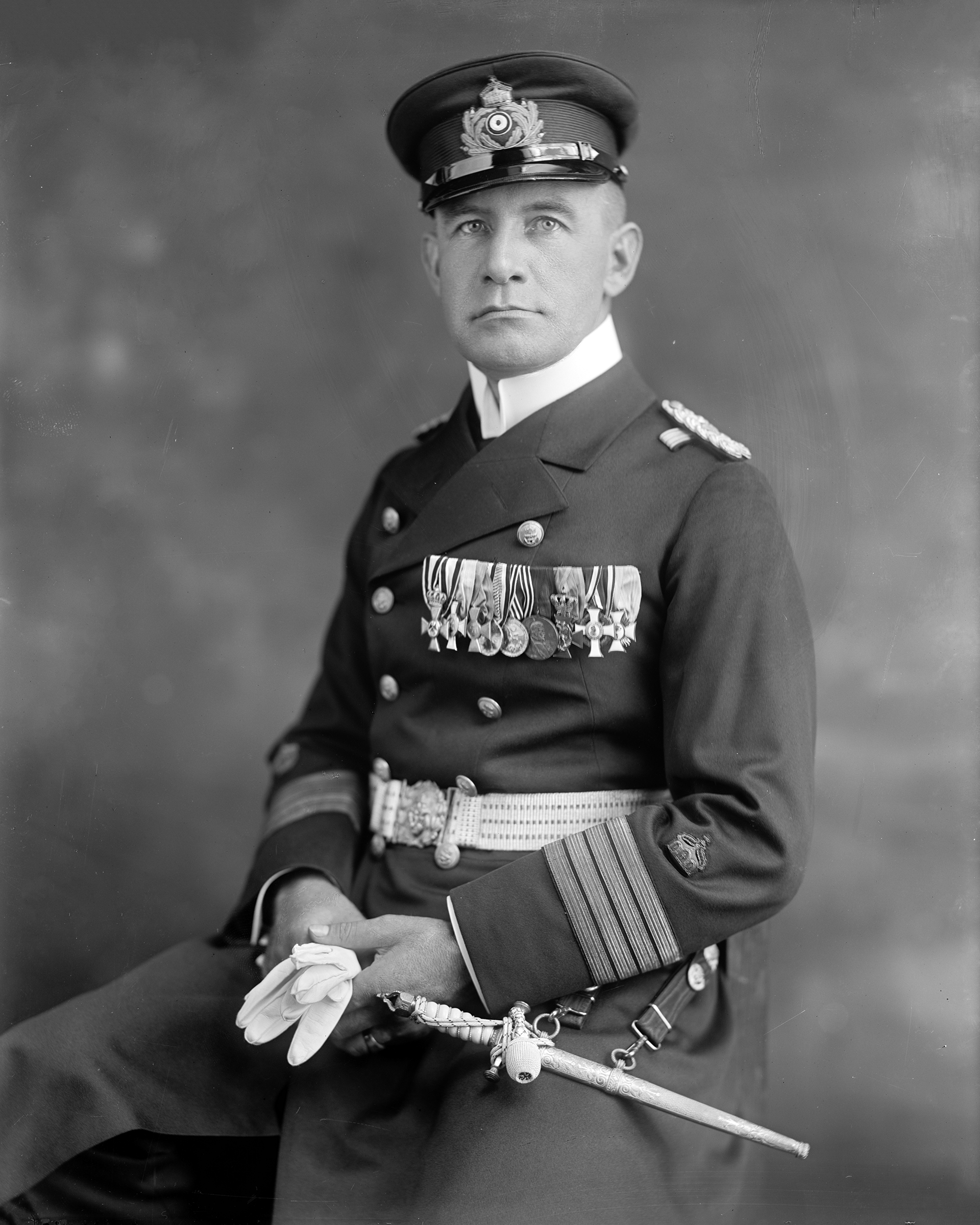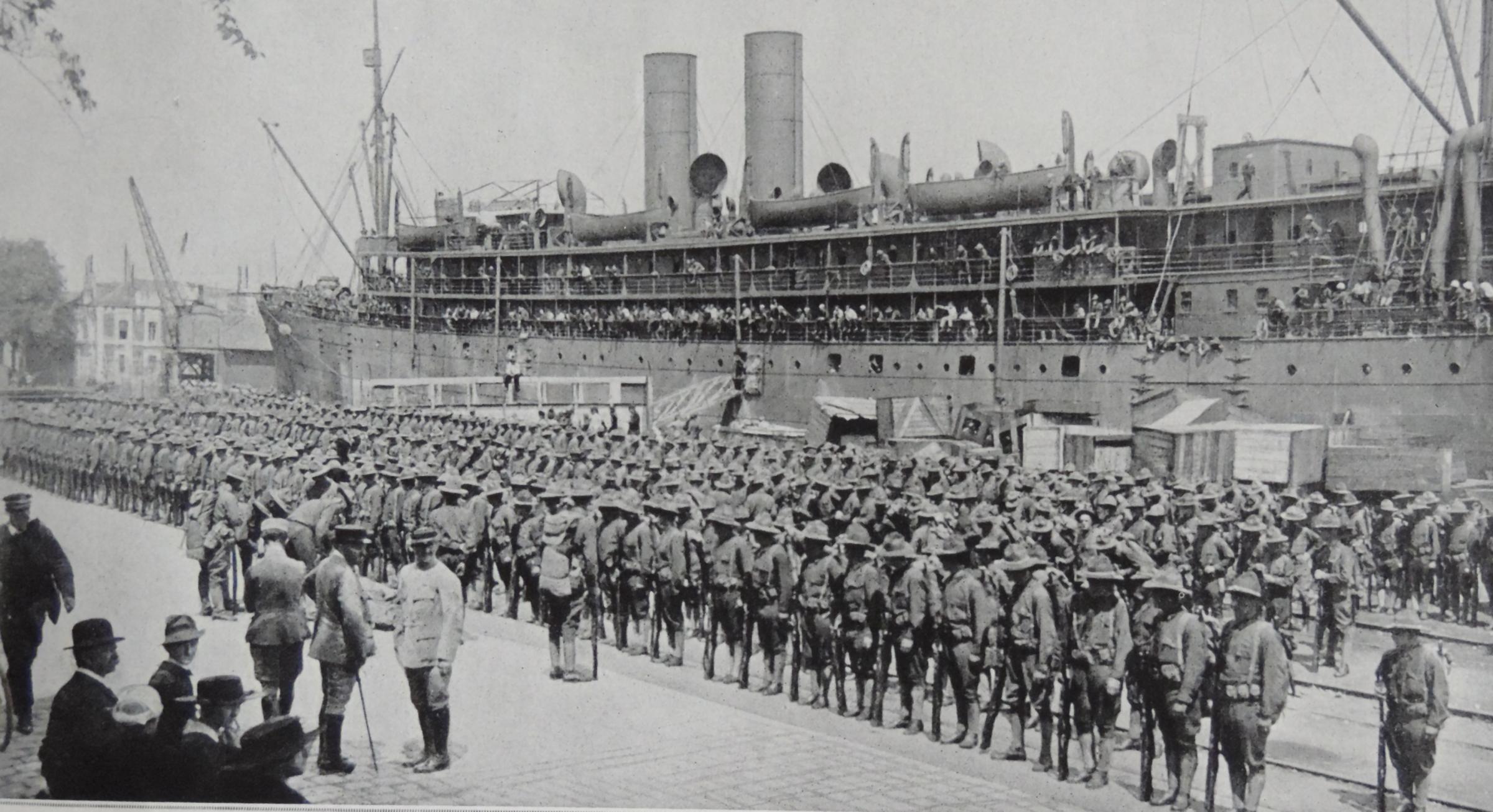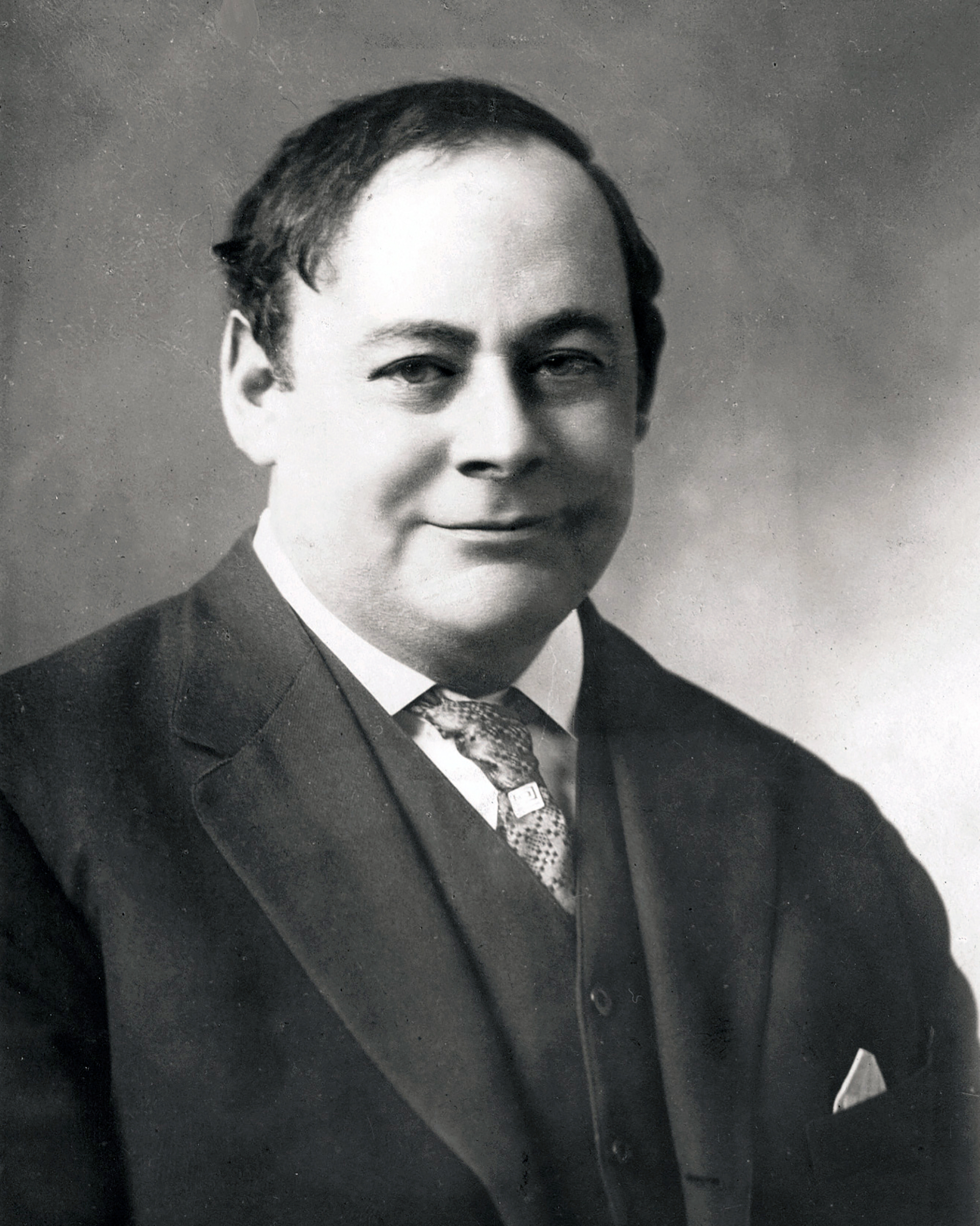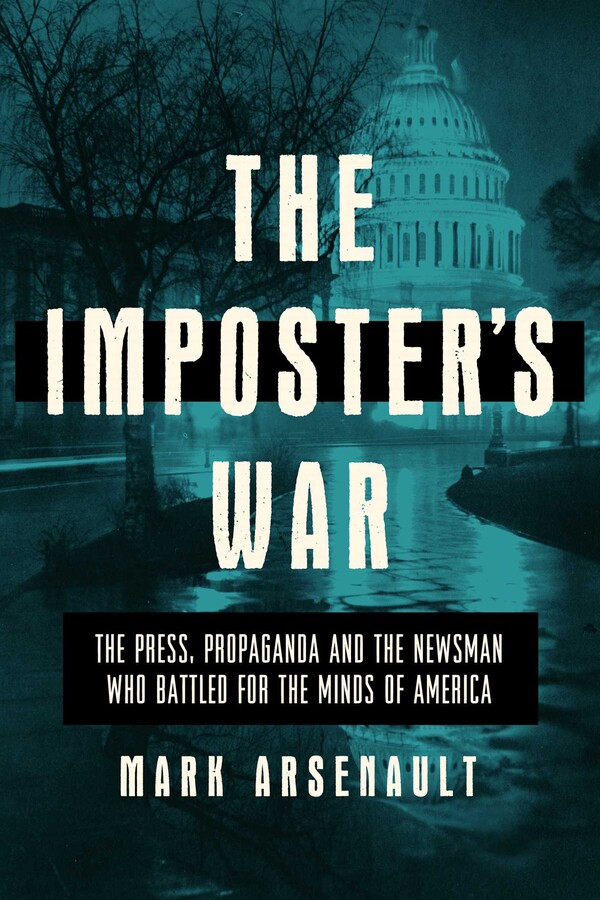Three days after Christmas in 1915, a New York City taxi bounced over streetcar tracks and weaved among the horse buggies on its way out of the city to the 5th Street Pier in Hoboken, New Jersey, home of the Holland-America cruise line, as the grand Dutch ocean liner Rotterdam prepared for an Atlantic crossing to Europe. It carried a special fare: German diplomat Captain Karl Boy-Ed, a career military man and the German embassy’s naval attaché, one of the highest-ranking consular posts.
After nearly four years stationed in America, Boy-Ed was sailing home in disgrace. President Woodrow Wilson’s administration had ejected Boy-Ed from the United States, along with his colleague in the German diplomatic corps, military attaché Franz von Papen, due to a rising pile of evidence that the diplomats were engaged in sabotage and deceptive propaganda in brazen violation of America’s policy of neutrality in World War I.

The war had been raging in Europe for a little over a year. As a neutral nation, the United States maintained diplomatic relations with each of the major combatants: Germany and its ally Austria-Hungary on one side, and England, France, and Russia on the other. For Germany, the expulsion of Boy-Ed and Papen was a humiliating setback in international relations.
What made the day even worse for the intellectual and gentlemanly Boy-Ed was that he had been chased from America by a mysterious loudmouth who edited a small daily newspaper in, of all places, Providence, Rhode Island. Over the previous six months, the Providence Journal—led by its flamboyant editor John Revelstoke Rathom—had printed dozens of exclusive stories exposing alleged German intrigue in America. German diplomats in the United States were scandalized by the onslaught of articles, which blamed them for plots from passport fraud to propaganda, to undermining US industry and labor, to outright sabotage.
In Rathom’s most outrageous story, he had named Boy-Ed as the point man in a German conspiracy to return the exiled Mexican dictator Victoriano Huerta back to power in a coup, and to smuggle weapons to Huerta so that Mexico could attack the southwestern United States. It sounded too crazy to be true. Trying to goad the United States and Mexico into a shooting war? Boy-Ed denied every word of it. But the Germans understood that many people in the United States believed Rathom—too many. And if enough Americans came to see Germany as a menace, the United States might enter the war on the side of Britain and its allies.
Read more: How American Troops Helped Turn the Tide in World War I
The Hoboken pier was already borderline bedlam when Boy-Ed arrived. A cluster of news photographers and moviemakers waited for him at the dock entrance. Cameras blazed. At the end of a long walk to the gangway, a group of forty reporters waited, firing questions and demanded interviews. Boy-Ed reached inside his coat and produced copies of a statement.
“Of course I refrain at the hour of my departure from again reciting all the stories which were told about me in the American papers and which, like the silly Huerta tale, were invented by the Providence Journal,” Boy-Ed’s statement raged. “[The paper] has done its utmost to create an almost hysterical suspicion throughout the country in order to prejudice public opinion against Germany.”
“We Germans do not understand what you call your free press,” the statement continued. “We do not permit the representatives of friendly governments to be insulted ad libitum or our government to be embarrassed in its dealing with friendly nations, nor men’s reputations to be wantonly sacrificed by the wild and reckless utterances of irresponsible papers.”
Rathom was far from the only journalist to publish damning stories about German espionage in the critical years the United States remained neutral before joining the war. The New York World, for instance, contributed several embassy-rattling stories about German propaganda and economic sabotage. But Rathom’s Providence Journal became the go-to source for German plots and intrigue, despite a circulation barely one-tenth the size of the major New York rags.
The stories Rathom published confounded his readers’ imagination—and, at first, many of his scoops were dismissed as fantasies. He exposed German plots to corner the U.S. weapons market, to falsify evidence against President Wilson, to illegally broadcast coded messages to Berlin in violation of U.S. neutrality, to scuttle one of their own ocean liners in the Hudson River to trap visiting U.S. warships upstream.
These sensations and dozens more almost overnight built a national reputation for the combative news editor, even if Rathom never explained in print how a modest, conservative newspaper in Rhode Island was getting all these scoops. Rathom’s stories were reprinted in national, regional, and local newspapers and magazines, delivered to front stoops and coffee counters in every state in the country, each story starting with what would become a famous opening line: “The Providence Journal will say today…”
Most Americans wanted the United States to stay far away from the European conflict, but each blockbuster story about German scheming in America weakened the country’s resistance to war.

At the outbreak of war, German diplomats in the United States were no longer just representatives of the empire. Germany expected them to help win the fight. The German government funneled great sums of money through its U.S. staff for propaganda to manipulate American public opinion. On top of the psychological warfare, in January 1915 the chief of the political section of the Imperial German General Staff transmitted authorization to German diplomats in the United States for sabotage against “factories for military supplies; railroads, dams, [and] bridges,” largely to interrupt the shipment of war supplies to Great Britain and its allies.
The diplomats who carried out these orders thought of themselves not as saboteurs but patriots. They were not trained spies, and they made mistakes, sometimes head-slappingly stupid ones. But they could not imagine how their every misstep ended up in the headlines.
Read more: Read President Wilson’s 1917 Address on the U.S. Entering World War I
(Rathom later offered an answer. In 1917, he launched a U.S. speaking tour in which he boasted of commanding a counter-spy ring of ordinary newspaper reporters who had infiltrated German and Austrian consulates in America undercover as employees. They swiped documents, eavesdropped on secret phone calls, and even seduced a German diplomat—all in the name of getting the scoop. The American press was gobsmacked: A newspaper had defeated German spies at their own espionage game?)
With the expulsion of Boy-Ed and Papen from the United States in 1915, German propagandists were desperate to dig up some dirt to discredit Rathom. The pro-German press found Rathom’s background like a dark forest full of fog, getting thicker the deeper they looked. They unearthed an embarrassing love triangle and bizarre poisoning plot from Rathom’s past, as well as a few questionable claims in his résumé, but not even Rathom’s most fearsome enemies could have imagined the breadth of his deception.

Because John Rathom was an imposter. His identity was an invention built on a biography of lies, created and embodied by a remarkable actor playing the role of a lifetime, all to hide the secret he feared would destroy him.
The imposter was undeniably brilliant. He was also a grifter, a con man, and an extortionist; one of the most gifted liars of his era and immune to shame. A biography he submitted in 1920 to a Who’s Who–type publication was an extraordinary salad of hyperbole, misdirection, and lies. He claimed to have been educated at Scotch College, Melbourne; Whinham College, Adelaide; and Harrow School in England. None of those institutions had any record of him. He said he was a war correspondent for the Melbourne Argus in the Sudan campaign in 1886, but the company that holds the records of the newspaper has confirmed nobody named Rathom ever wrote for the paper. He boasted that he accompanied the explorer Frederick Schwatka on an Alaska expedition in 1890. There was no such expedition.
More from TIME
Rathom’s lies could be oddly specific. Among his most cherished possessions, he said, was a congratulatory telegram from William McKinley on the day Rathom became a U.S. citizen. That’s unlikely, unless McKinley sent it by Ouija board—the twenty-fifth president had been dead five years by the time Rathom took the oath of citizenship in 1906.
Under ordinary circumstances, someone of his dark talents would have been best suited for a career fleecing marks at a crooked carnival. But in the midst of an unprecedented global conflict, this ink-stained rogue found redemption in dedicating his unusual skill set to a cause bigger than himself—the defeat of the Central Powers and allied victory in World War I. He hurled himself fully into the effort, at enormous personal and professional risk.
And nobody suspected, not then, that Rathom’s astonishing tales of commanding a counter-spy operation were not true. At least, not true as he told them. As Rathom’s reputation grew, the lies got bigger and more dangerous, until they consumed him. Through the lies is the way to the imposter’s truth.
Read more: Everything You Know About How World War I Ended Is Wrong
Rathom is difficult to write about. Piercing his cocoon of lies is one problem—the other is the fact that he left almost no evidence of his unguarded thoughts. He wrote miles of news copy, and thousands of letters, but tested every word through his mental self-censor for possible minefields. The imposter was always on, never showing his inner self.
Rathom’s story is intertwined with America’s in World War I. The battlefields were in Europe, but the war was fought here, too, with printer’s ink, propaganda, and bombs. The things German agents did to manipulate the United States in 1915, the Russians copied in 2016, and continue today. During World War I, people in power used the press to spread a fear of foreigners. Some still do, though now the fear radiates digitally. In Rathom’s day, the U.S. government ruined the lives of people who dared to say unpopular things; now civilians do this to each other on social media. John Rathom is a human Rorschach test for whether a collection of lies can tell a larger truth, an argument that carries over from his era to ours.

Adapted from The Imposter’s War: The Press, Propaganda, and the Battle for the Minds of America by Mark Arsenault. Copyright © 2022. Available from Pegasus Books.
More Must-Reads From TIME
- The 100 Most Influential People of 2024
- Coco Gauff Is Playing for Herself Now
- Scenes From Pro-Palestinian Encampments Across U.S. Universities
- 6 Compliments That Land Every Time
- If You're Dating Right Now , You're Brave: Column
- The AI That Could Heal a Divided Internet
- Fallout Is a Brilliant Model for the Future of Video Game Adaptations
- Want Weekly Recs on What to Watch, Read, and More? Sign Up for Worth Your Time
Contact us at letters@time.com